Abstract
We assayed [9,10(n)-3H]palmitate oxidation by fibroblast monolayers from patients with fatty acid oxidation disorders. Activities in the different disorders were (percent control): short-chain acyl-coenzyme A (CoA) dehydrogenase deficiency (115%), medium chain acyl-CoA dehydrogenase deficiency (18%), long-chain acyl-CoA dehydrogenase deficiency (28%), multiple acyl-CoA dehydrogenation disorder, mild and severe variants (49% and 7%), and palmityl-carnitine transferase deficiency (4%). Multiple acyl-CoA dehydrogenation disorder, medium chain acyl-CoA dehydrogenase-deficient lines, and long-chain acyl-CoA dehydrogenase-deficient lines all complemented one another after polyethylene glycol fusion, with average activity increases of 31-83%. We detected two complementation groups in the severe multiple acyl-CoA dehydrogenation disorder lines, consistent with deficiencies of either electron transfer flavoprotein or electron transfer flavoprotein:ubiquinone oxidoreductase. The metabolic block in the latter cell lines is threefold more severe than in the former (P less than 0.001). No intragenic complementation was observed within either group. We assigned two patients with previously unreported severe multiple acyl-CoA dehydrogenation disorder to the electron transfer flavoprotein:ubiquinone oxido-reductase-deficient group.
Full text
PDF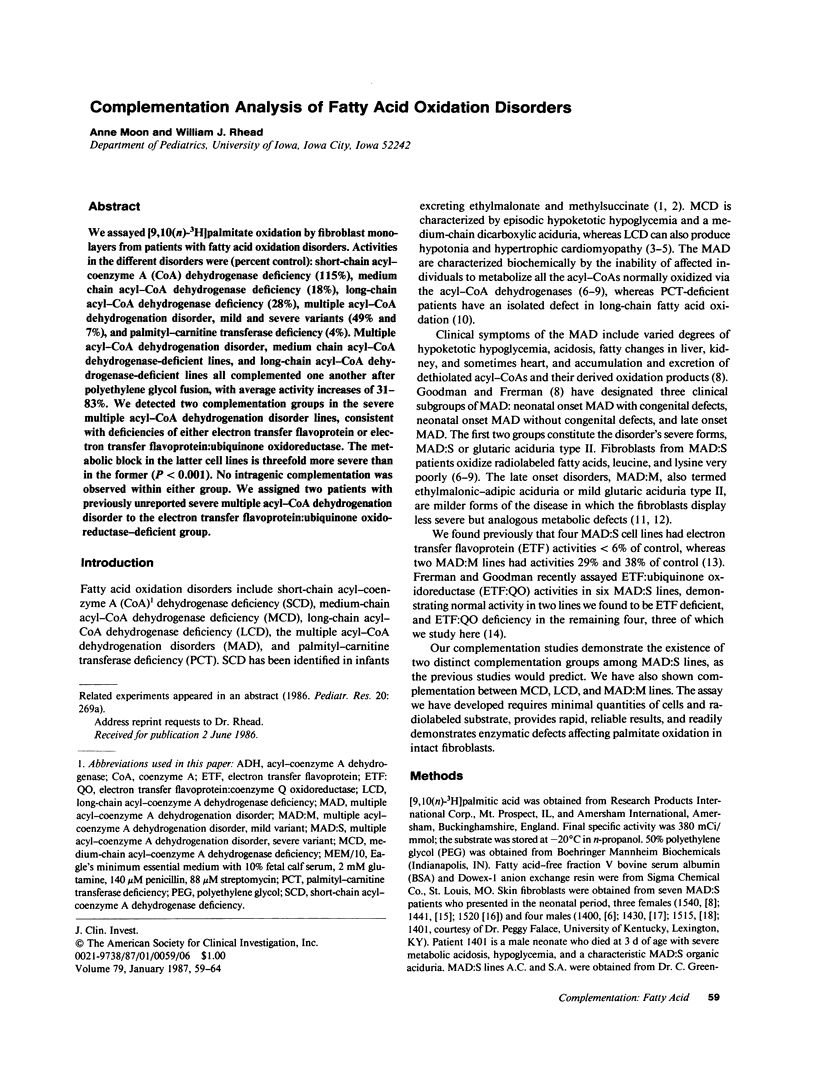
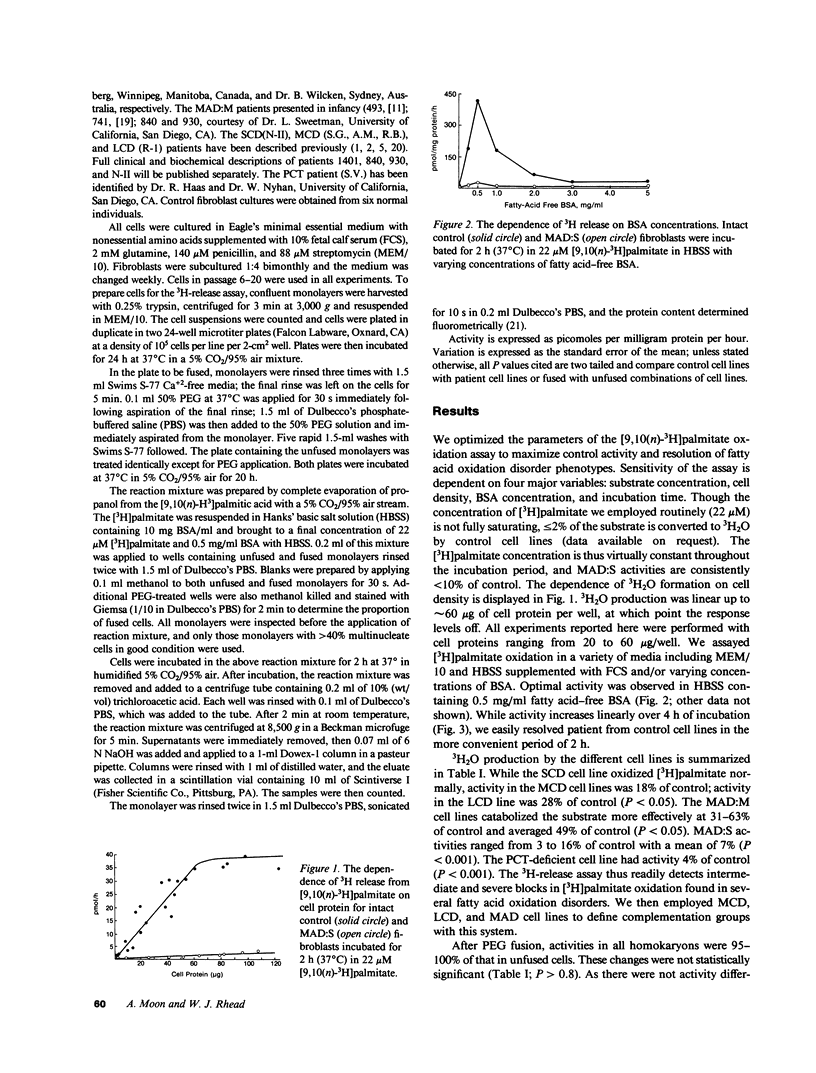
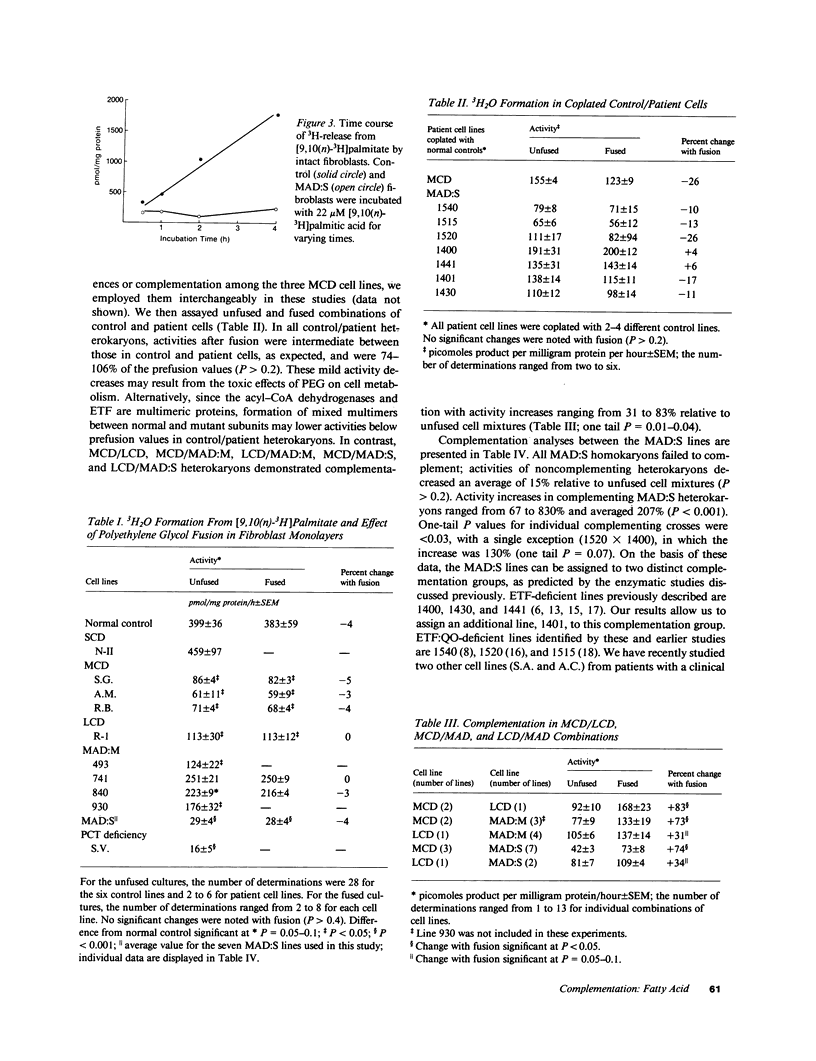
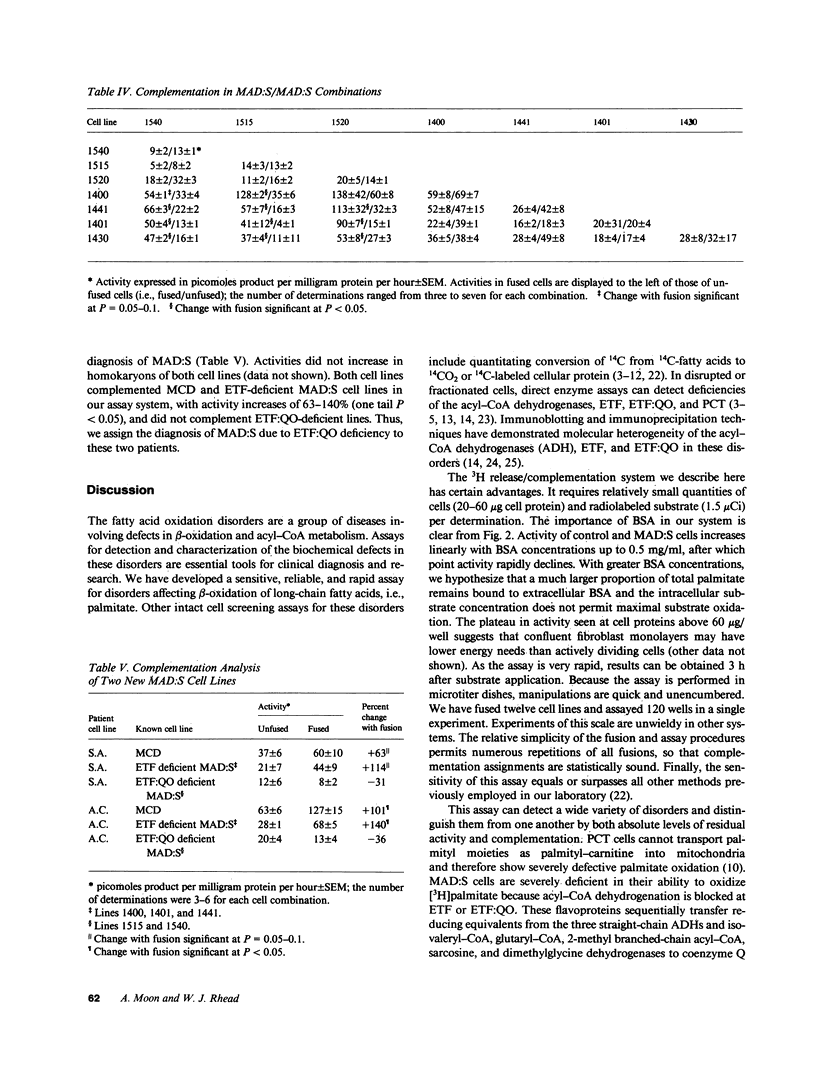
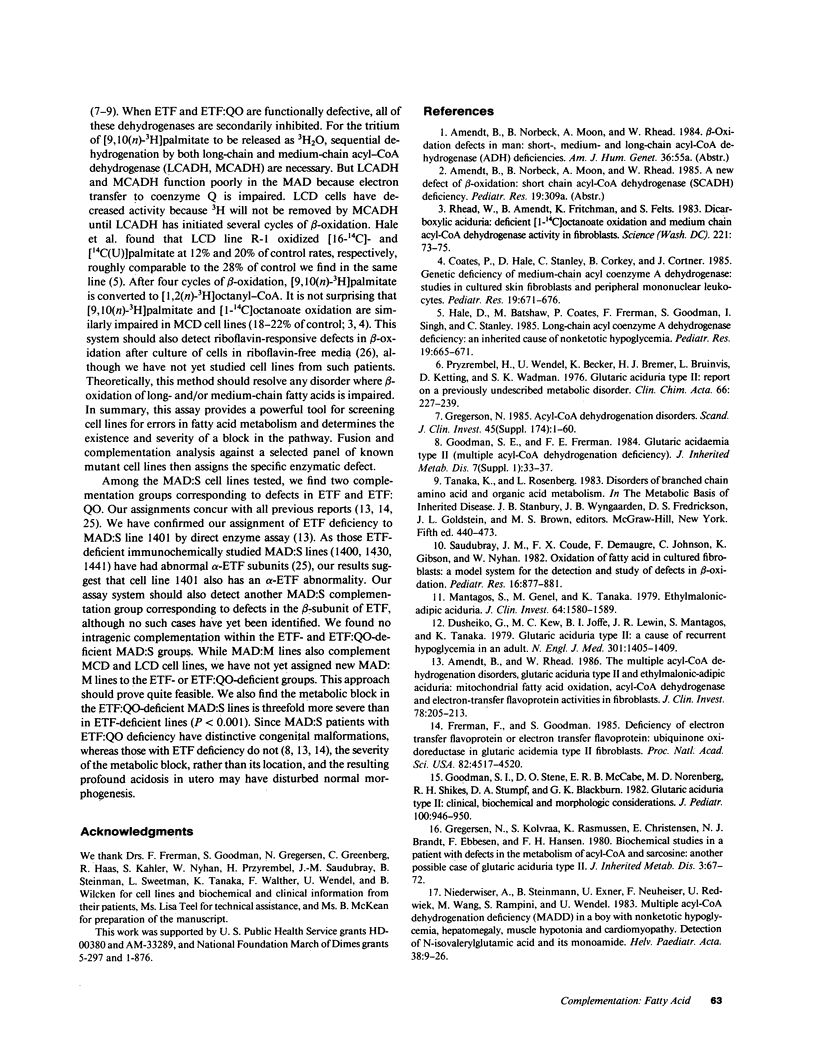
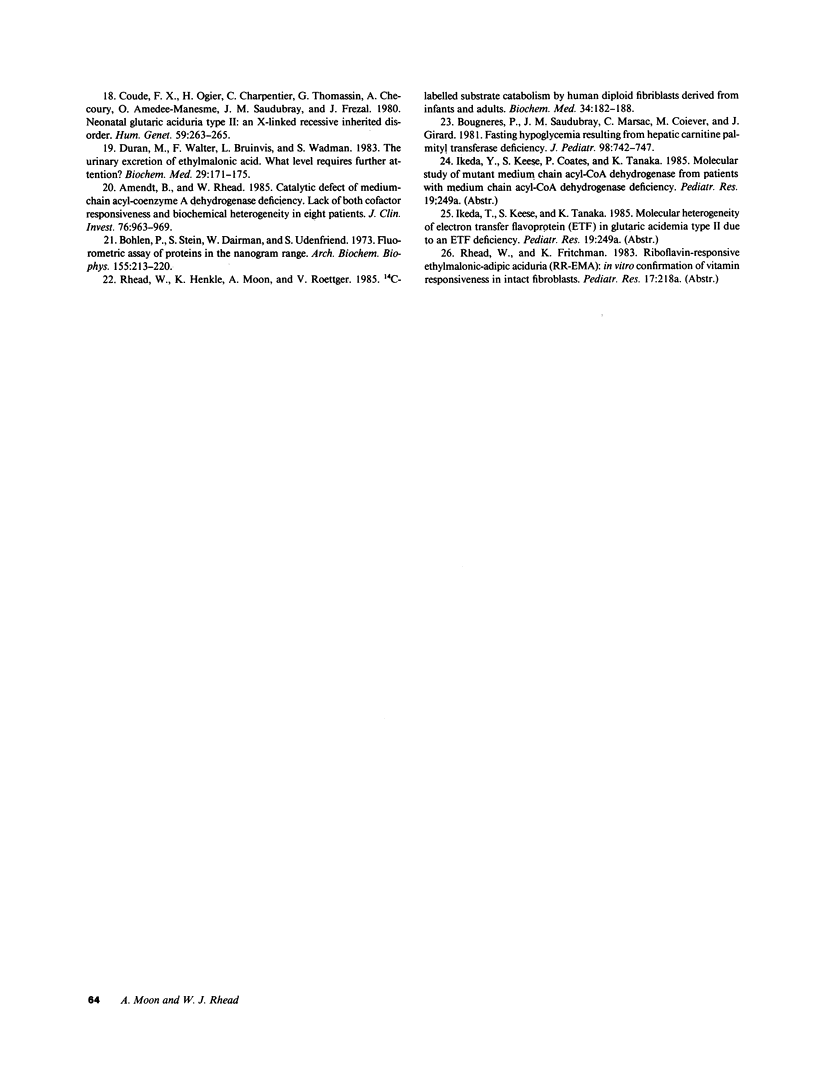
Selected References
These references are in PubMed. This may not be the complete list of references from this article.
- Amendt B. A., Rhead W. J. Catalytic defect of medium-chain acyl-coenzyme A dehydrogenase deficiency. Lack of both cofactor responsiveness and biochemical heterogeneity in eight patients. J Clin Invest. 1985 Sep;76(3):963–969. doi: 10.1172/JCI112096. [DOI] [PMC free article] [PubMed] [Google Scholar]
- Amendt B. A., Rhead W. J. The multiple acyl-coenzyme A dehydrogenation disorders, glutaric aciduria type II and ethylmalonic-adipic aciduria. Mitochondrial fatty acid oxidation, acyl-coenzyme A dehydrogenase, and electron transfer flavoprotein activities in fibroblasts. J Clin Invest. 1986 Jul;78(1):205–213. doi: 10.1172/JCI112553. [DOI] [PMC free article] [PubMed] [Google Scholar]
- Bougnères P. F., Saudubray J. M., Marsac C., Bernard O., Odièvre M., Girard J. Fasting hypoglycemia resulting from hepatic carnitine palmitoyl transferase deficiency. J Pediatr. 1981 May;98(5):742–746. doi: 10.1016/s0022-3476(81)80834-7. [DOI] [PubMed] [Google Scholar]
- Böhlen P., Stein S., Dairman W., Udenfriend S. Fluorometric assay of proteins in the nanogram range. Arch Biochem Biophys. 1973 Mar;155(1):213–220. doi: 10.1016/s0003-9861(73)80023-2. [DOI] [PubMed] [Google Scholar]
- Coates P. M., Hale D. E., Stanley C. A., Corkey B. E., Cortner J. A. Genetic deficiency of medium-chain acyl coenzyme A dehydrogenase: studies in cultured skin fibroblasts and peripheral mononuclear leukocytes. Pediatr Res. 1985 Jul;19(7):671–676. doi: 10.1203/00006450-198507000-00007. [DOI] [PubMed] [Google Scholar]
- Coude F. X., Ogier H., Charpentier C., Thomassin G., Checoury A., Amedee-Manesme O., Saudubray J. M., Frezal J. Neonatal glutaric aciduria type II: an X-linked recessive inherited disorder. Hum Genet. 1981;59(3):263–265. doi: 10.1007/BF00283677. [DOI] [PubMed] [Google Scholar]
- Duran M., Walther F. J., Bruinvis L., Wadman S. K. The urinary excretion of ethylmalonic acid: what level requires further attention? Biochem Med. 1983 Apr;29(2):171–175. doi: 10.1016/0006-2944(83)90037-6. [DOI] [PubMed] [Google Scholar]
- Dusheiko G., Kew M. C., Joffe B. I., Lewin J. R., Mantagos S., Tanaka K. Recurrent hypoglycemia associated with glutaric aciduria type II in an adult. N Engl J Med. 1979 Dec 27;301(26):1405–1409. doi: 10.1056/NEJM197912273012601. [DOI] [PubMed] [Google Scholar]
- Frerman F. E., Goodman S. I. Deficiency of electron transfer flavoprotein or electron transfer flavoprotein:ubiquinone oxidoreductase in glutaric acidemia type II fibroblasts. Proc Natl Acad Sci U S A. 1985 Jul;82(13):4517–4520. doi: 10.1073/pnas.82.13.4517. [DOI] [PMC free article] [PubMed] [Google Scholar]
- Goodman S. I., Frerman F. E. Glutaric acidaemia type II (multiple acyl-CoA dehydrogenation deficiency). J Inherit Metab Dis. 1984;7 (Suppl 1):33–37. doi: 10.1007/BF03047371. [DOI] [PubMed] [Google Scholar]
- Goodman S. I., Stene D. O., McCabe E. R., Norenberg M. D., Shikes R. H., Stumpf D. A., Blackburn G. K. Glutaric acidemia type II: clinical, biochemical, and morphologic considerations. J Pediatr. 1982 Jun;100(6):946–950. doi: 10.1016/s0022-3476(82)80525-8. [DOI] [PubMed] [Google Scholar]
- Gregersen N., Kølvraa S., Rasmussen K., Christensen E., Brandt N. J., Ebbesen F., Hansen F. H. Biochemical studies in a patient with defects in the metabolism of acyl-CoA and sarcosine: another possible case of glutaric aciduria type II. J Inherit Metab Dis. 1980;3(3):67–72. doi: 10.1007/BF02312527. [DOI] [PubMed] [Google Scholar]
- Hale D. E., Batshaw M. L., Coates P. M., Frerman F. E., Goodman S. I., Singh I., Stanley C. A. Long-chain acyl coenzyme A dehydrogenase deficiency: an inherited cause of nonketotic hypoglycemia. Pediatr Res. 1985 Jul;19(7):666–671. doi: 10.1203/00006450-198507000-00006. [DOI] [PubMed] [Google Scholar]
- Lindstedt G., Lundberg P. A., Hammond G. L., Vihko R. Sex hormone-binding globulin--still many questions. Scand J Clin Lab Invest. 1985 Feb;45(1):1–6. doi: 10.3109/00365518509160964. [DOI] [PubMed] [Google Scholar]
- Mantagos S., Genel M., Tanaka K. Ethylmalonic-adipic aciduria. In vivo and in vitro studies indicating deficiency of activities of multiple acyl-CoA dehydrogenases. J Clin Invest. 1979 Dec;64(6):1580–1589. doi: 10.1172/JCI109619. [DOI] [PMC free article] [PubMed] [Google Scholar]
- Niederwieser A., Steinmann B., Exner U., Neuheiser F., Redweik U., Wang M., Rampini S., Wendel U. Multiple acyl-Co A dehydrogenation deficiency (MADD) in a boy with nonketotic hypoglycemia, hepatomegaly, muscle hypotonia and cardiomyopathy. Detection of N-isovalerylglutamic acid and its monoamide. Helv Paediatr Acta. 1983 Mar;38(1):9–26. [PubMed] [Google Scholar]
- Przyrembel H., Wendel U., Becker K., Bremer H. J., Bruinvis L., Ketting D., Wadman S. K. Glutaric aciduria type II: report on a previously undescribed metabolic disorder. Clin Chim Acta. 1976 Jan 16;66(2):227–239. doi: 10.1016/0009-8981(76)90060-7. [DOI] [PubMed] [Google Scholar]
- Rhead W. J., Amendt B. A., Fritchman K. S., Felts S. J. Dicarboxylic aciduria: deficient [1-14C]octanoate oxidation and medium-chain acyl-CoA dehydrogenase in fibroblasts. Science. 1983 Jul 1;221(4605):73–75. doi: 10.1126/science.6857268. [DOI] [PubMed] [Google Scholar]
- Rhead W. J., Moon A., Roettger V., Henkle K. 14C-labeled substrate catabolism by human diploid fibroblasts derived from infants and adults. Biochem Med. 1985 Oct;34(2):182–188. doi: 10.1016/0006-2944(85)90109-7. [DOI] [PubMed] [Google Scholar]
- Saudubray J. M., Coudé F. X., Demaugre F., Johnson C., Gibson K. M., Nyhan W. L. Oxidation of fatty acids in cultured fibroblasts: a model system for the detection and study of defects in oxidation. Pediatr Res. 1982 Oct;16(10):877–881. doi: 10.1203/00006450-198210000-00015. [DOI] [PubMed] [Google Scholar]


